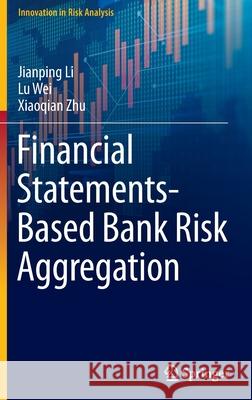Financial Statements-Based Bank Risk Aggregation » książka
topmenu
Financial Statements-Based Bank Risk Aggregation
ISBN-13: 9789811904073 / Angielski / Twarda / 2022 / 220 str.
Financial Statements-Based Bank Risk Aggregation
ISBN-13: 9789811904073 / Angielski / Twarda / 2022 / 220 str.
cena 602,40
(netto: 573,71 VAT: 5%)
Najniższa cena z 30 dni: 539,74
(netto: 573,71 VAT: 5%)
Najniższa cena z 30 dni: 539,74
Termin realizacji zamówienia:
ok. 22 dni roboczych
Dostawa w 2026 r.
ok. 22 dni roboczych
Dostawa w 2026 r.
Darmowa dostawa!
Kategorie:
Kategorie BISAC:
Wydawca:
Springer
Język:
Angielski
ISBN-13:
9789811904073
Rok wydania:
2022
Ilość stron:
220
Waga:
0.48 kg
Wymiary:
23.39 x 15.6 x 1.42
Oprawa:
Twarda
Wolumenów:
01
Dodatkowe informacje:
Wydanie ilustrowane











